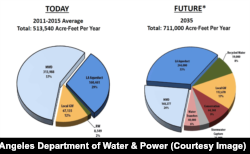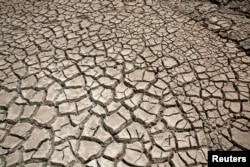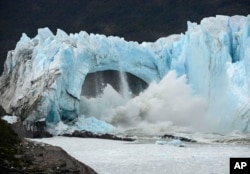Millions of people in Chennai, India’s sixth largest city, have run out of water.
Chennai is the capital of Tamil Nadu, a southern state. It has an estimated 10 million people. As water taps in the city run dry, people now must line up to get fresh water from water tank trucks.
The drought is affecting life in other ways as well.
The Associated Press reports that some companies in Chennai have asked employees to work from home. Restaurants are closing early and limiting service.
Officials in Tamil Nadu say groundwater supplies have shrunk. They have asked other states for water. These supplies must last them until October, when monsoon rains are expected to come.
In this area, monsoon rains are key to replenishing water supplies. But the rains do not always come on time.
This year’s monsoon arrived a week late in India. Weather experts say that monsoon rains usually cover two-thirds of the country by mid-June. However, the rains currently have reached less than half of that area.
Other cities are drying up
Chennai is not the only city in the world in danger of running out of water.
Last year, officials in South Africa’s city of Cape Town was prepared to declare April 21 “Day Zero.” That was to be the day Cape Town’s water supply would be gone. However, the city avoided disaster by re-directing water from other areas and limiting water use in the city.
In Brazil, the federal government said about 16 percent of its 5,570 cities has water problems. That includes the crowded city of Sao Paulo and the capital of Brasilia.
Across the world, Beijing in China, Los Angeles in the United States, Melbourne in Australia, Jakarta in Indonesia and many others are under water stress.
In its 2018 World Water Development Report, the United Nations warns that by the year 2050 demand for water around the world is expected to increase by nearly one-third. By then, 5 billion people could be left with poor access to fresh water.
Where is all the water?
Scientists at the National Oceanic and Atmospheric Administration (NOAA) say that the oceans hold about 97 percent of the Earth's water.
The remaining three percent is found in many different places, “including glaciers and ice, below the ground, in rivers and lakes, and in the atmosphere.”
Of the remaining fresh water, scientists estimate that just one percent is easily accessible. The rest is trapped in glaciers and snowfields.
I’m Anna Matteo.
Anna Matteo adapted this story for Learning English based on Associated Press and other news reports. Hai Do was the editor.
________________________________________________________________
Words in This Story
drought – n. a long period of time during which there is very little or no rain
replenish – v. to make full or complete once more
access – n. the right or ability to approach, enter, or use
glacier – n. a large body of ice moving slowly down a slope or valley or spreading outward on a land surface
atmosphere – n. the whole mass of air that surrounds the Earth : the gas surrounding a heavenly body (as a planet)









